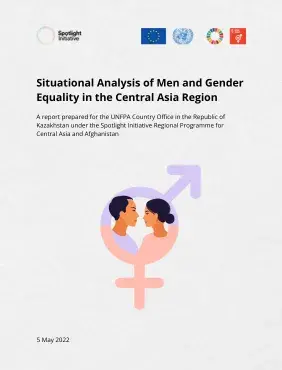Gender-equitable men support gender-equitable futures. Engaging men and boys in promoting gender equality and eliminating all forms of violence against women and girls (VAWG) is a critical priority of the Spotlight Initiative.1 The Spotlight Initiative is a global initiative of the United Nations which has received generous support from the European Union. It aims to eliminate all forms of violence against women and girls. One of the six key pillars of the Spotlight Initiative is ‘Prevention,’ which involves engaging men and boys in the ‘promotion of gender-equitable norms, attitudes, and behaviors.’ The inclusion of addressing harmful masculine norms is the result of decades of research on VAWG and sexual and reproductive health and rights, as well as advocacy from women’s and other gender equality movements. Such research has found that harmful masculine norms of what it means to be a man contributes to the normalization and perpetuation of men’s violence against women and girls.
As a result, today, there are many examples of programmes engaging men and boys as partners, community leaders, allies, and more, and with that, a growing evidence base demonstrating what works and what knowledge gaps remain. This Situational Analysis aims to do the following for five Central Asian countries – Kazakhstan, Kyrgyzstan, Tajikistan, Turkmenistan, and Uzbekistan – who are beneficiaries of the Spotlight Initiative Regional Program for Central Asia and Afghanistan: (1) Synthesize and summarize the evidence on how governments currently address men’s engagement in laws, policies, and national action plans; (2) analyze prevalent gender-related attitudes, perceptions, and practices of men and women in the region; and (3) summarize the best and promising practices on engaging men and boys. The findings and recommendations from this Situational Analysis will inform the development of a men’s engagement strategy and a high-level communications plan to involve men and boys in promoting gender equality in Central Asia.


